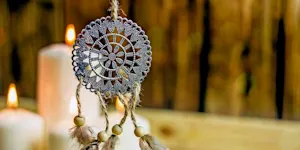What Makes This Word Tick
"Typify" is a verb with a knack for making things clear—it's all about representing or being a quintessential example of something. If something typifies another thing, it embodies and exemplifies its main characteristics. It's like when your cat curls up in a sunbeam and you say, "Ah, that's the life of a typical feline indeed!"
If Typify Were a Person…
Picture a museum curator with an eye for arranging exhibits just right. This person delights in finding the perfect item to showcase the entire theme of an exhibition. They're detail-oriented and have a strong sense of what defines a group or trend. You might find them sipping tea and listening to classical music, pondering the essence of everyday things.
How This Word Has Changed Over Time
The concept of typifying has remained relatively stable—its mission has always been to capture the essence. However, as societies evolved and shifted perspective, what was once considered typical has changed. Think of fashion: what typified elegance in the 1920s is quite different from today!
Old Sayings and Proverbs That Use Typify
While not popping up in ancient proverbs per se, typify’s spirit is found in sayings like "birds of a feather flock together." This captures how similar things are represented by and amongst themselves, much like how "typify" is used.
Surprising Facts About Typify
Despite its straightforward nature, "typify" requires a sharp eye. Misuse could easily happen in describing something unrepresentative. Also, it rarely stands alone, often paired with words of group identity or trends, making it the quiet wingman of the linguistic world.
Out and About With This Word
Next time you’re at an art gallery or even browsing through your wardrobe, ask yourself what pieces typify the style or mood being showcased. It’s always a good conversation starter!
Pop Culture Moments Where Typify Was Used
In critiques and reviews, "typify" is a favorite among journalists—like in movie or album reviews, when they claim a particular scene or song typifies the whole genre or era it belongs to. When critics noted how "The Force Awakens" typified J.J. Abrams' love of nostalgia—there it was in action.
The Word in Literature
Authors and poets often use "typify" to paint vivid mental images quickly. Consider writers like Charles Dickens or Jane Austen, whose characters often typify the social mores and traits of their times. It's a lovely tool for setting a scene with nuanced precision.
Moments in History with Typify
Think of the 1960s. The anti-establishment sentiments typify the counterculture movement of the era with its peace protests and vibrant art. Or the Industrial Revolution, with factories and mechanization typifying progress, could have been another backdrop for our word to shine.
This Word Around the World
In other languages, typifying something might take different forms. In French, you might say "représenter," while in German, it's "kennzeichnen." Each culture has its way of defining traits—something unique and tied to their heritage and perspective.
Where Does It Come From?
Derived from the Greek “typikos,” meaning “of the nature of a type or form,” it traveled through French into the English language as an evolution of various related words like “type” and “typification.”
How People Misuse This Word
People sometimes misuse "typify" when they mean "identify." If something merely stands out, it isn't necessarily typifying unless it's a representative hallmark of its group or category. Remember, typify involves embodying something quintessential.
Words It’s Often Confused With
Identify: To recognize something as a distinct entity.
Characterize: Describing features but not necessarily representing a whole.
Symbolize: A specific representation, not always typical.
Additional Synonyms and Antonyms
Synonyms for typify include represent, symbolize, and embody. Antonyms could be obscure, disguise, or distort, where the essence is hidden or misrepresented.
Want to Try It Out in a Sentence?
"Her fashion choices always seem to typify the spirit of the roaring twenties, with their bold lines and flapper styles." Give it a try—see how it typifies your flair for language!
















